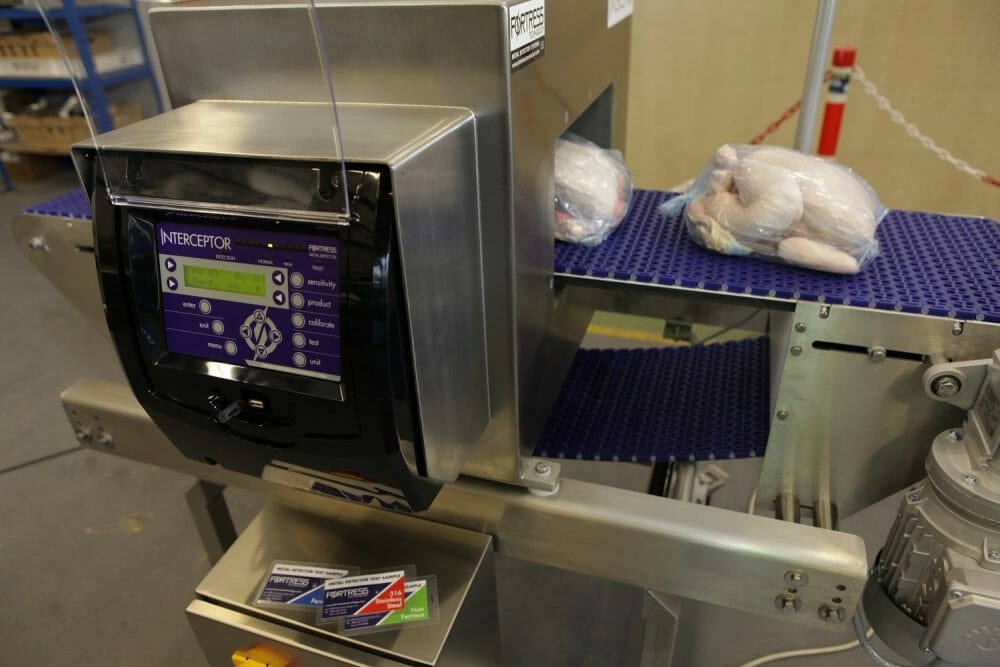By Phil Brown, European Sales Director, Fortress Technology
Metal detection testing procedures must be clearly documented and communicated to all relevant staff. In accordance with the manufacturer’s recommendations, testing should take place regularly, usually hourly, and between each product changeover. Intervals between tests need to be short enough that if a fault is found, products potentially affected have not left your premises and can be identified, recalled and retested.
The costs of conducting these tests manually on such a regular basis can be high. Automatic testing tackles this drain on resources and helps to eliminate the risk of human error. For example, in one day, each metal detector system manually tested at least five times each day, may cost a manufacturer around £250 a day in machine downtime and testing time, especially in pipeline and gravity application
To ensure more reliable manual metal detector tests:
- Place test samples in the CENTRE of the aperture, the least sensitive spot. This is highly unlikely to be sitting on top of your product pack, or on the top of the conveyor belt. Test samples should be inserted into your product to ensure it passes through the centreline of the aperture.
- USE good, fresh product. Remember that product characteristics, packaging and size will likely affect the detection level, so use the actual product your metal detector is inspecting. And when making test packs, use fresh product, especially for packed vegetables, salad or meat, as degradation can affect the product’s characteristics. Before inserting the sample, pre-check the packs to ensure they are free of metal contaminants.
- Check ALL 3 metal samples – ferrous, non-ferrous and stainless steel. Because they are all detected at different levels, even if one metal sample is picked up, that doesn’t necessarily mean the integrity of the detector is proven. To ensure you are detecting stainless steel contaminants that are commonplace in food production machinery, use a non-magnetic 3 series (i.e. 316) stainless steel sample.
- Test using REALISTIC production conditions, including speed and the way products are presented.This ensures that your reject mechanism is operating correctly. Automatic reject systems must prove that it is rejecting the pack effectively, regardless of where the sample is located (e.g. front of pack or back of pack). An automatic test system must also ensure that subsequent packs are not damaged or trapped, or ignoring consecutive contaminated packs. Even belt stop systems should be checked to ensure contaminated packs are held at the point where an operative can recover them.









